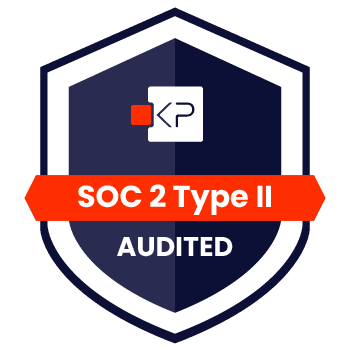The compliance landscape for hours of service (HOS) management grows increasingly stringent, and manual logging leaves organizations and drivers open to errors and increased risks. ELDs are relied on heavily to clock service hours accurately and consistently so you can present data in the right format in a variety of situations. ELD data is readily available when you need it for roadside inspections, audits, or even litigation.
Innovations in ELDs have also created opportunities for better managing your fleet and drivers by creating a collaboration between automated logging and human management and engagement with drivers.
As federal law now requires many motor carriers and drivers required to adopt electronic logging devices (ELDs), it’s essential for transportation companies to understand how to choose the right ELDs for their fleets.
Understanding ELDs and Your Fleet’s Needs
ELDs are required for most commercial drivers who must keep HOS records of duty status (RODS). The federal ELD rule sets specific requirements for this technology and requires that in-use ELDs are registered with and certified by the Federal Motor Carrier Safety Administration.
Some primary needs ELDs must meet include:
- Automatic capture of RODS data
- Warning and flagging of HOS violations
- Flagging potential HOS falsification or identification records
- Ability to view logs or general on-demand real-time reports
Essential Features and Functionality
Ensure that the electronic logging device you select supports key features and functions for compliance with regulations as well as meeting business needs.
1. What Key Features Does an ELD Need to Ensure Compliance with FMCSA Regulations?
ELDs must automatically record certain information at an appropriate rate, including:
- Date and time
- Geolocation (every 60 minutes when the vehicle is in motion as well as at critical points such as power up and down and when duty status changes)
- Engine hours
- Vehicle miles
- Driver, vehicle, and motor carrier identification
- Authenticated user
ELDs must have a location accuracy of around 1 mile and synchronize with the vehicle engine to capture automatic data.
2. Can the ELD System Integrate with Other Fleet Systems?
Integrations are critical to proactive management and understanding of HOS and other fleet or driver concerns. Integration with dashboard systems or other in-vehicle technology allows drivers to better understand and meet compliance needs. Additionally, a connection to back-office systems supports route management, emergency response, and compliance coaching.
User Experience (UX) and Ease of Use
If the ELD options you provide drivers aren’t easy to use, you’ll have a harder time driving buy-in and adoption across your organization.
3. What ELD Elements Make Daily Operations Smoother for Drivers?
Consider how easy the ELD is to use and what functions your drivers need to effectively use the ELD. For example, does the ELD support in-cab dashboard display so drivers can quickly change duty status or see, at a glance, where they stand with HOS? Or does the ELD work with mobile devices for utmost portability? Think about what would increase drivers’ commitment to using the device when comparing options.
4. How Does the ELD Provider Handle Updates and Maintenance to Minimize Downtime?
Some ELDs can collect additional data to support more proactive maintenance of vehicles. Advanced ELDs provide end-to-end vehicle data, including information about tires or fluid levels. An integration could send this data to your fleet management software for optimal resource management practices that reduce downtime and safety issues.
Security and Data Protection
With so much data automatically captured, protecting that information should be a primary concern when selecting an ELD.
5. What Security Measures Protect Sensitive Data Collected by the ELD?
Ask about critical security measures, including encryption of data, the ability to set access controls, and if the system is monitored proactively to ensure data protection. Talk to vendors about how data is handled during exchange between the ELD unit and other programs.
6. How Does the ELD Ensure Data Accuracy and Prevent Tampering?
Find out how specific ELD systems protect the accuracy of original data and prevent drivers or anyone else from tampering with recorded data. Maintaining compliance requires raw data that has not been modified to tell a different story about factors such as HOS or duty status.
Cost Considerations
While ELDs are required for compliance, they are available at multiple price points and pricing structures vary between vendors. It’s best to do your research first so you can enter vendor discussions with an understanding of your budget.
7. What is the Total Cost of Ownership, Including Purchase Price, Subscription Fees, and Any Additional Hardware or Services?
Consider the total cost, over time, of the ELD. That might include an upfront hardware purchase as well as ongoing subscription fees. You might also need to purchase other items to integrate the ELD correctly.
8. Are There Any Hidden Costs or Common Pitfalls in Pricing Structures That Fleet Managers Should Be Aware Of?
Look closely at fee and pricing structures and ask specific questions to avoid unpleasant budget surprises later. Ask how pricing is managed and whether number of users, amount of data, or any other factors might play a role.
Looking to the Future: Scalability and Updates
Avoid purchasing a solution that will be obsolete in a year or two by looking to the future.
9. How Does the ELD Solution Accommodate Fleet Growth and Evolving Compliance Regulations?
Ask about the vendor’s plans to support scalability in the future with new devices and options as well as price points for larger users. Ensure the vendor works to remain updated with compliance regulations and has a plan to keep devices updated.
Choose Your ELD Wisely
An ELD is a crucial part of fleet compliance. By asking the right questions during the research process, you can select an ELD that meets your fleet’s needs now and in the future.
As a leader in the Safety Compliance industry, Fleetworthy Solutions™ knows that the right ELD can transform the way your fleet manages compliance and meets business goals. With our dedicated team of subject matter experts supporting you on every mile, you’ll have everything you need to select a compliant ELD and focus on your most valuable resources – your drivers.


